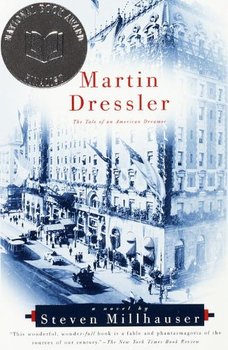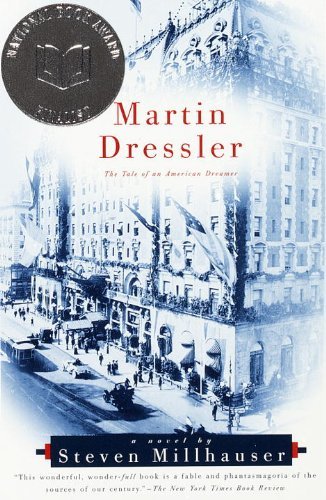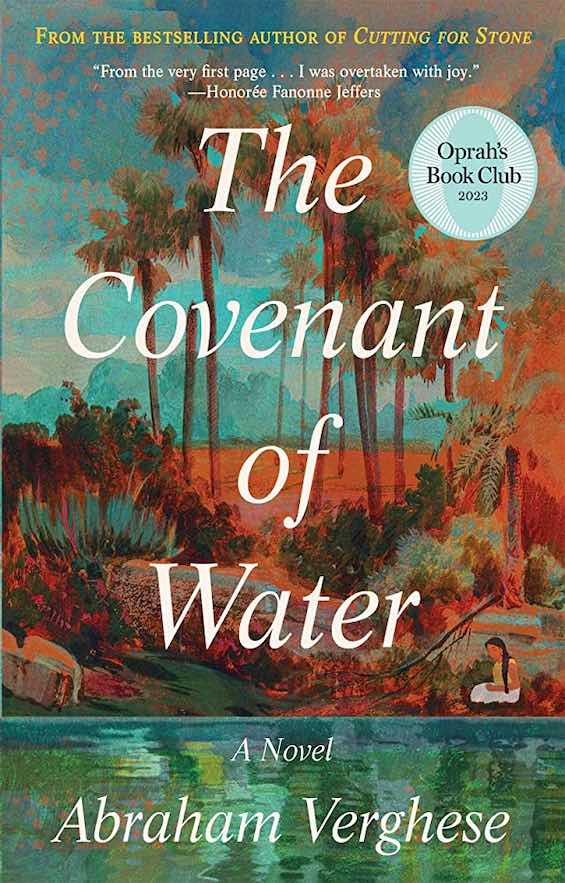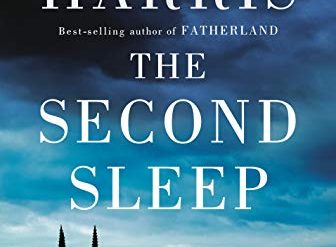
If you enjoy reading fantasy, you may appreciate Martin Dressler. Its Pulitzer Prize notwithstanding, I don’t, and I didn’t.
This is a peculiar sort of historical novel, set in a time and place shorn of history. It’s a story anchored on an unfamiliar plane of existence, as though set in Gilded Age New York in a parallel universe. And the eponymous Martin Dressler himself, the dreamer of the subtitle, is a fantasy figure as surely as Horatio Alger, the template for his character. Some of his business ideas are patently absurd. And he marries a severely neurotic woman so obviously unsuited to be his wife—unsuited to be anyone’s wife—that his own sanity seems suspect.
Estimated reading time: 4 minutes
At first, it’s a conventional rags-to-riches tale
In the early chapters of Martin Dressler, you’ll get the impression that this is a conventional rags-to-riches tale. Martin is born poor half a dozen years after the end of the Civil War. His father, an immigrant from Germany like so many others in that era, owns a small cigar and tobacco store that he keeps alive only through endless hours of work and the aid of his young son.
Martin Dressler: The Tale of an American Dreamer by Stephen Millhauser (1996) 306 pages ★★★☆☆
Winner of the Pulitzer Prize for Fiction
Soon, this Pulitzer winner goes off the rails
Martin’s break comes when he is fourteen and is hired as a bellboy at a nearby hotel. There, over the ensuing years, he gains increasing authority, first as a desk clerk and later as assistant to the manager. Along the way he begins building his first business—a cigar stand in the hotel’s lobby. Soon, he opens a nearby lunchroom and billiard parlor, which leads to a second, and a third one, and eventually a chain. So far, so good. But then the story begins sliding off the rails. No longer is Martin anchored in reality: his business plans become wilder and wilder, and his personal life leaves the bounds of reason as well.
Gilded Age New York was nothing like its portrayal in this novel
There’s little hint of New York City as it really was during the 1870s through the 1900s. That was a tumultuous period in the city’s history, with millions of immigrants streaming in from Europe and building their own New World. It was a time when each neighborhood took on a unique ethnic character, and violence was rampant on the borders between one group and another. Prejudice of all sort flowered in that hothouse environment: anti-Black, anti-Jewish, anti-Irish, anti-Italian. And the steady growth of Martin Dressler’s business empire would have been exceedingly unlikely, with financial panics and recessions dashing investors’ hopes every two or three years, including major depressions starting in 1873, 1893, and 1907. The City as depicted in this novel might have existed on Mars. It did not exist in the United States of America.
Why did this novel win a Pulitzer Prize?
So, why did this ill-conceived fairy tale receive the Pulitzer Prize for Fiction? The only explanation I can think of for this award, and for so many other instances of poorly chosen awardees, is that the literary types who serve on award juries are simply jaded. When I pick up a work of fiction, I want to read a story anchored in reality. Apparently, all too often, literary critics ignore whether a book is readable and believable. They seem to be looking, above all, for novelty—in style, format, or the deliberate blurring of genre boundaries. Ever since the publication of James Joyce’s unreadable tomes, the arbiters of literary taste have rejected the preferences of the reading public in favor of their own demands for fiction only they can appreciate.
For related reading
Check out How much is a Pulitzer Prize worth?
You might also be interested in:
- 20 most enlightening historical novels
- Top 10 great popular novels reviewed on this site
- Top 20 popular books for understanding American history
And you can always find my most popular reviews, and the most recent ones, on the Home Page.



























I will be sure not to read this. I do not waste my time on books that are deficient to this degree. Thanks for the review.